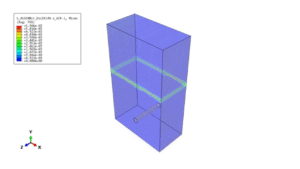
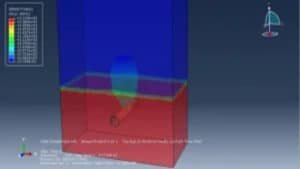
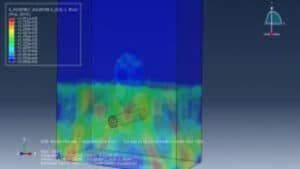
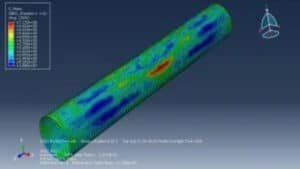
undefined


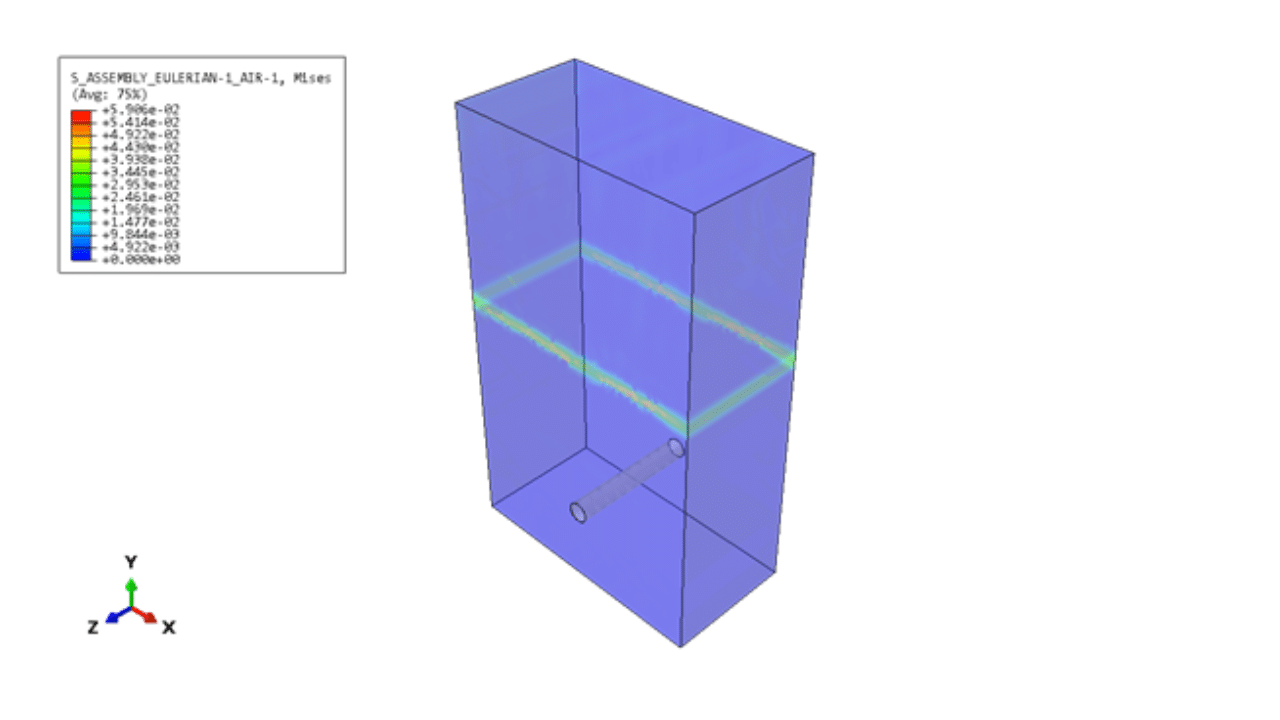
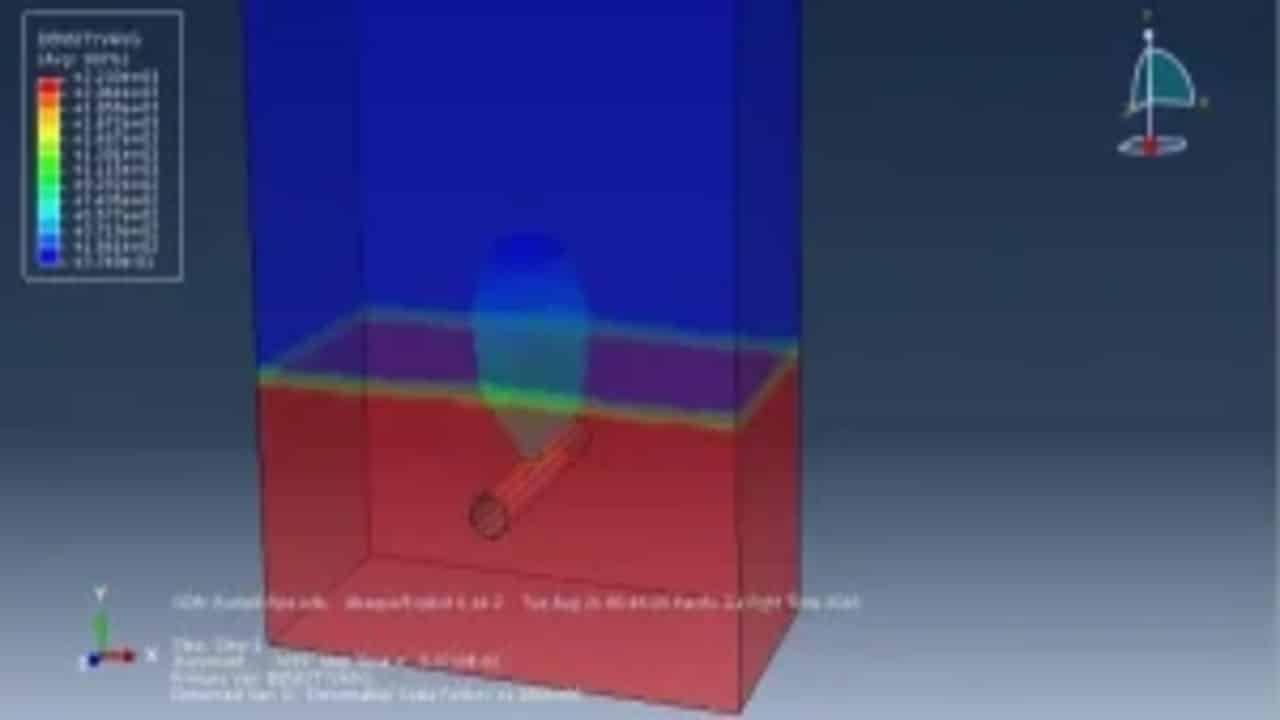
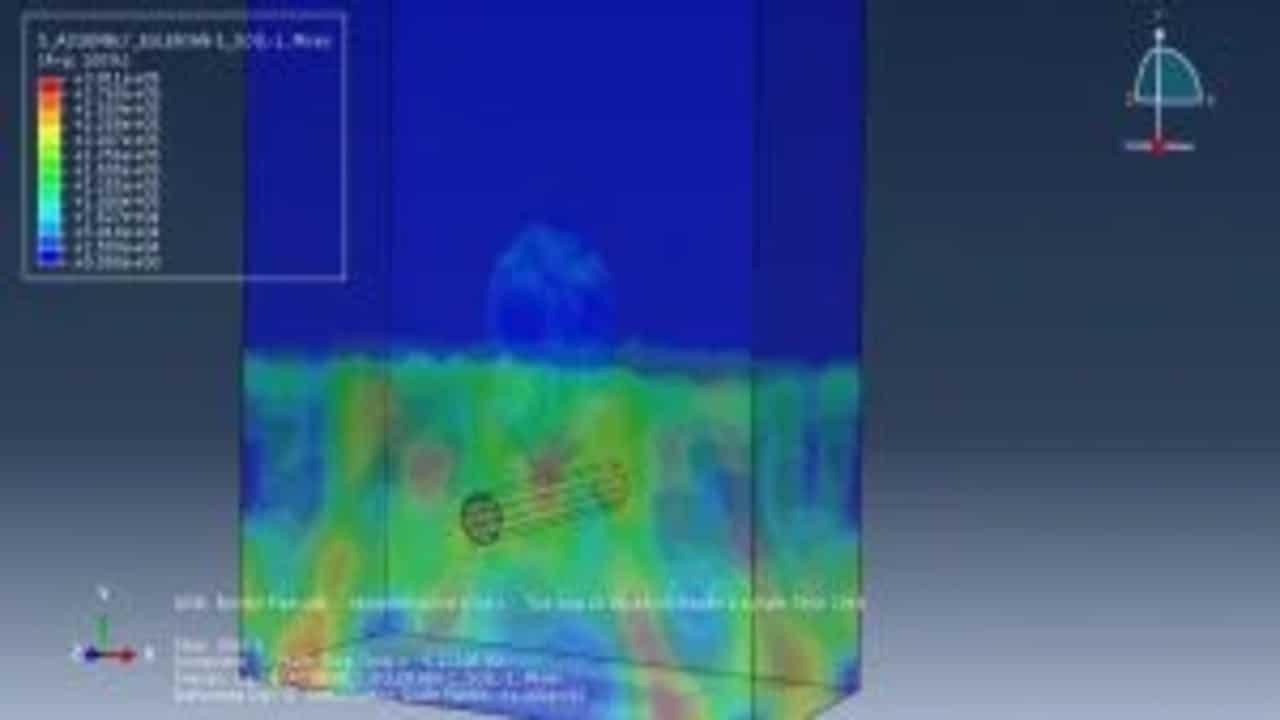
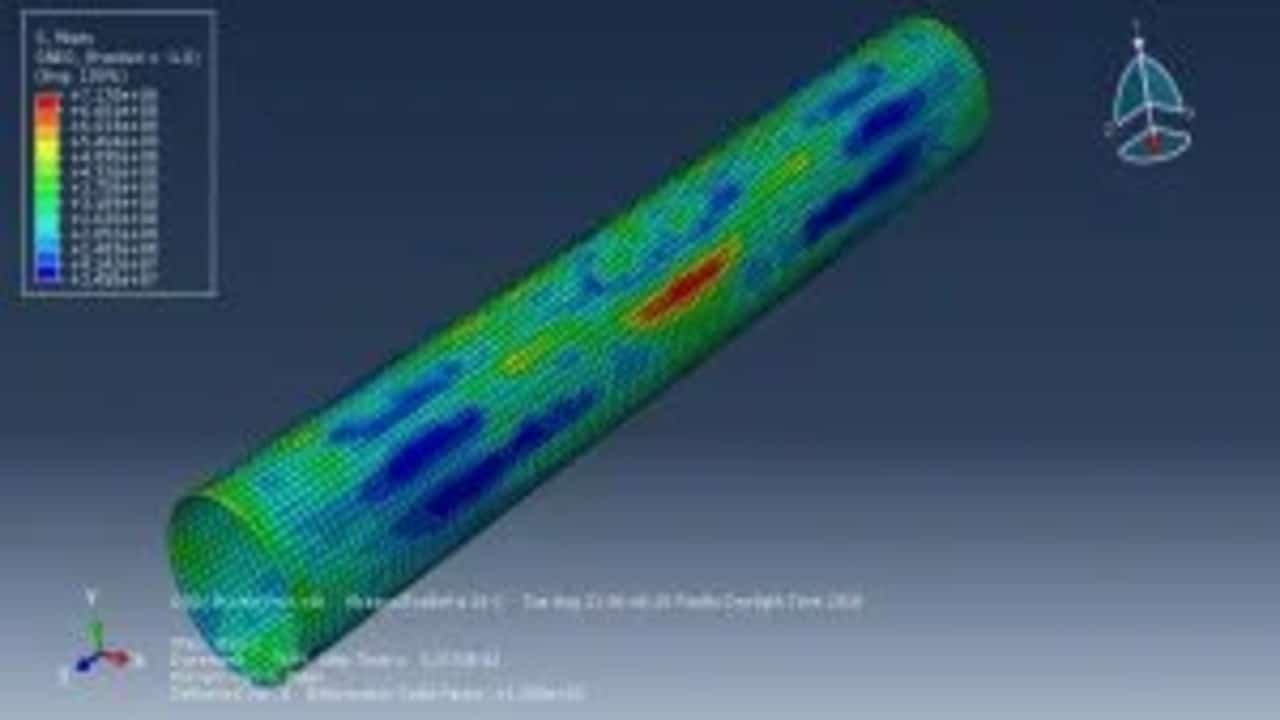


Papers abstract:
Multiple explosions along the route of oil and gas transmission pipelines in recent years demonstrate that terrorist attacks and sabotage have unfortunately increased. The present investigation is carried out numerically to minimize the amount of damage imposed on steel pipelines under close-in explosions. This research presents a novel concept, using CFRP (Carbon Fiber Reinforced Polymer) to strengthen the wall of steel pipelines against these incidents. For this purpose, a full coupled 3D finite element model was developed using a combined Eulerian-Lagrangian method. The simplified Johnson-Cook material model, the JWL equation of state, and the ideal gas equation of state were employed for modeling the pipe material behavior, charged detonation, and air, respectively. Mechanical behavior of the composite wrap was simulated using an anisotropic material model, and the damage initiation criteria were based on Hashin’s theory. In addition, soil mass behavior was modeled applying a Drucker-Prager strength criterion with piecewise hardening and hydro tensile limit accompanied by Mie-Grüneisen equation of state. Several comparisons were carried out between the results from the present investigation and those from field and empirical studies, and good agreements were observed. The results show that using a proper thickness of CFRP wrap for every particular circumstance can significantly improve the performance of steel pipelines under blast loads. For instance, in the current example, the maximum equivalent strains developed in most of the studied pipelines decreased by over 30% (up to 64%) with the application of a 4-mm-thickness CFRP wrap. The present study contributes to the protective design of steel pipelines.
Product Overview:
This tutorial provides a detailed walkthrough of simulating a subsurface explosion’s impact on buried steel pipelines using finite element analysis (FEA) software. It is based on an ISI research paper that investigates how Carbon Fiber Reinforced Polymer (CFRP) wraps can strengthen pipelines against blast loads. Key simulation steps include:
In this tutorial, the impact of a 10 kg TNT explosion on a buried steel pipeline is simulated, according to data from the work of M. Mokhtari and A. Alavi Nia.
We connect engineers through:

Want to receive push notifications for all major on-site activities?